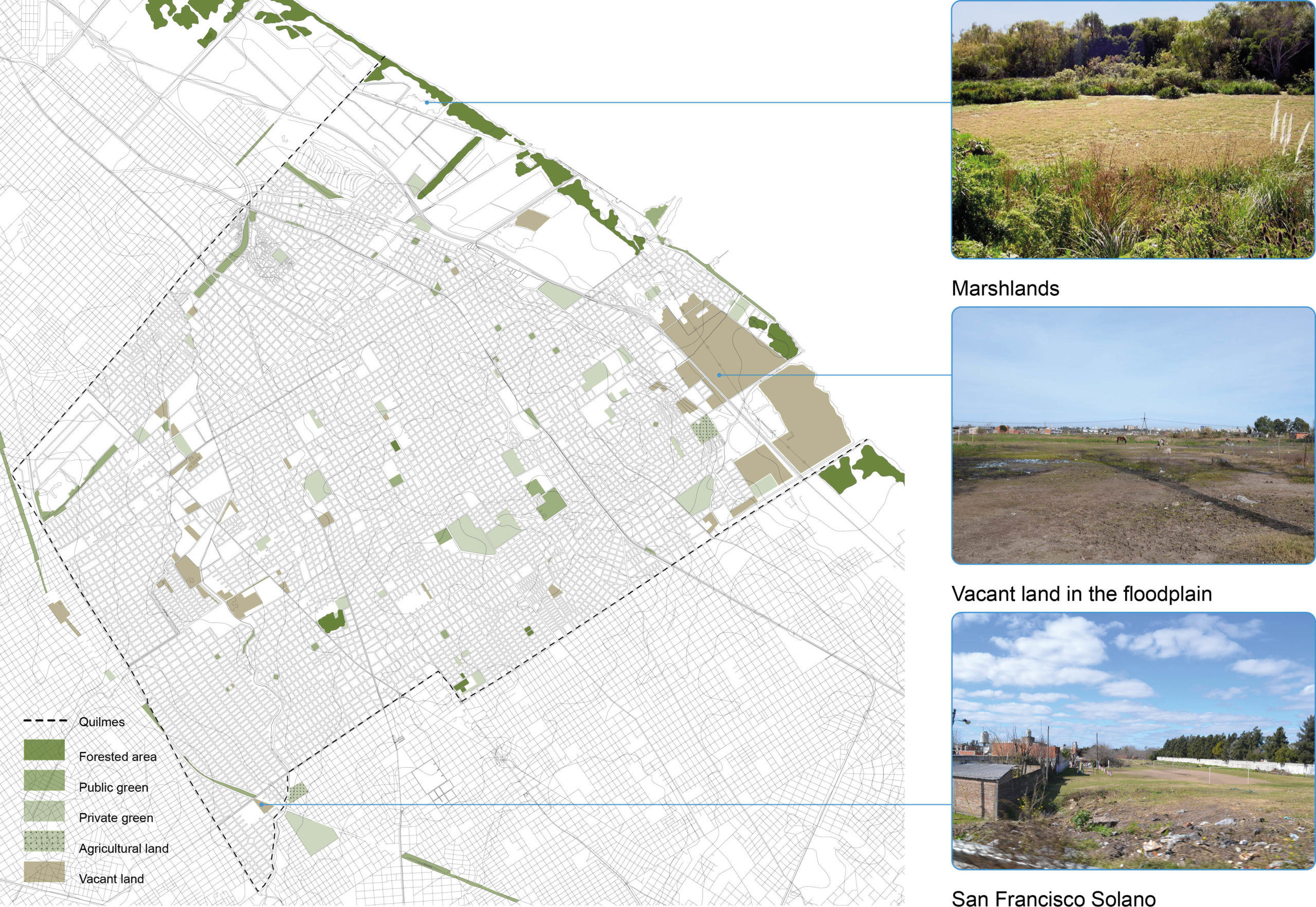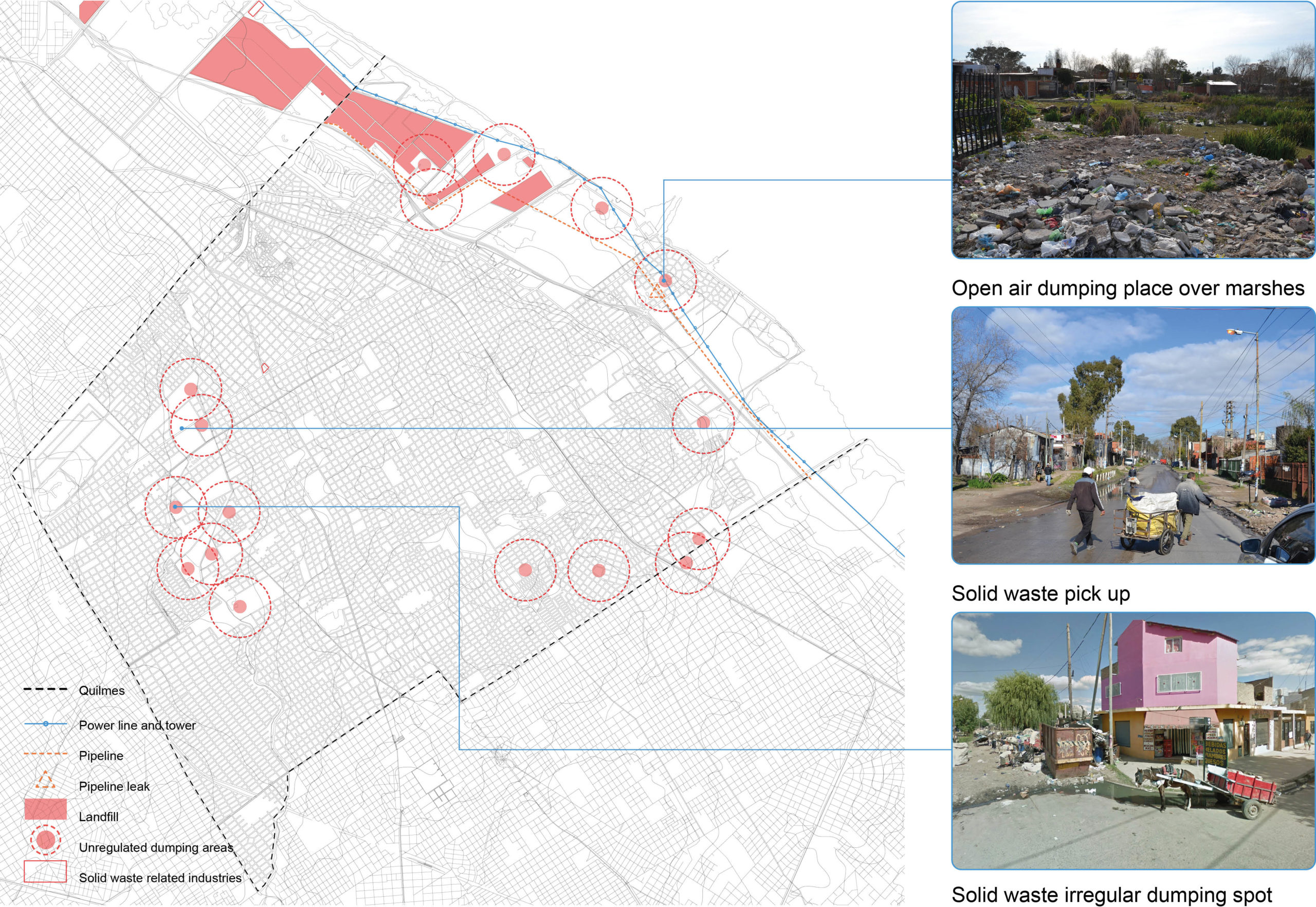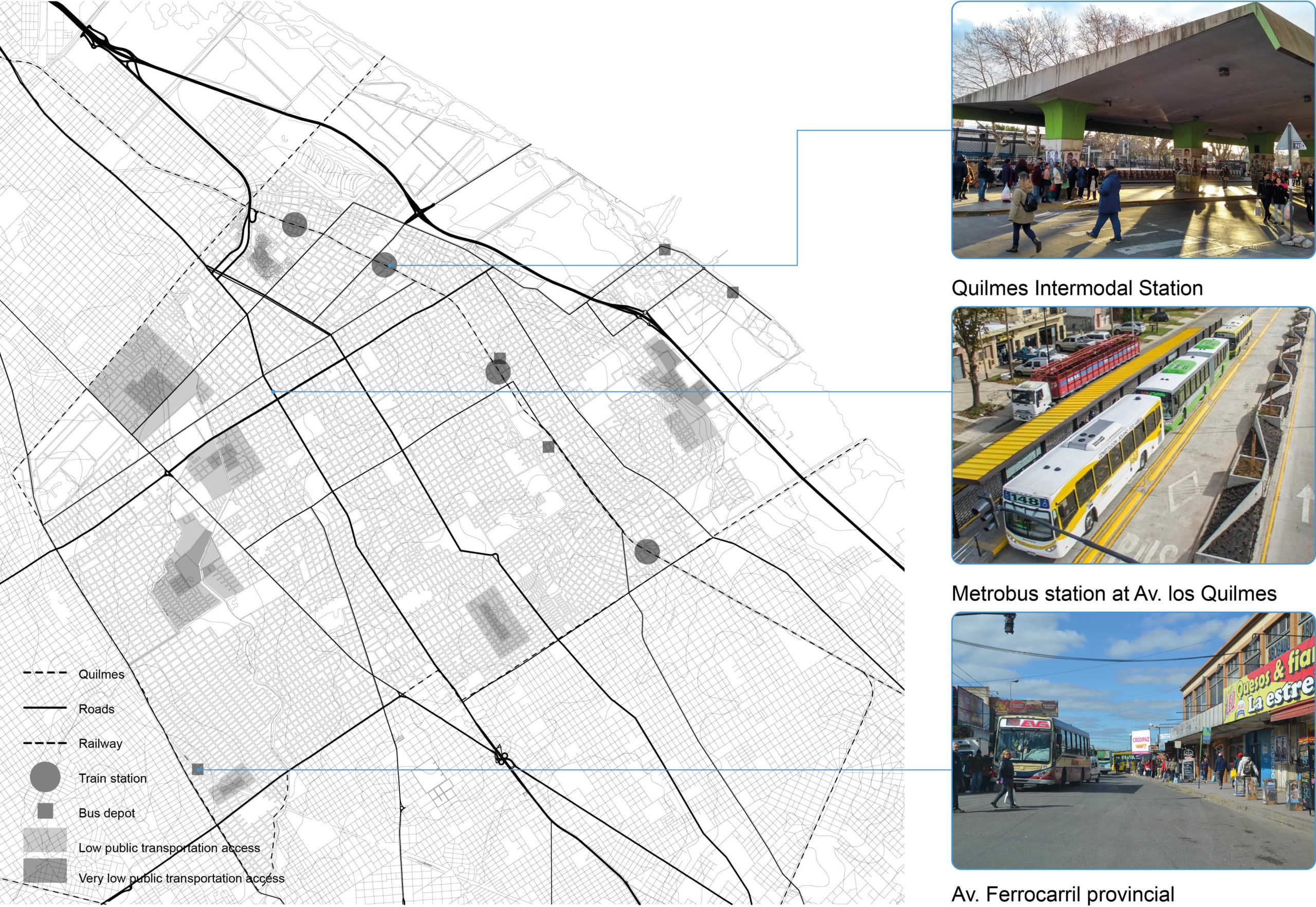URBAN SYSTEMS
Together with water, the city is analyzed through three main urban systems: vegetation system, solid waste system and mobility system.
VEGETATION SYSTEM
In general terms, there are very few green spaces and most of them are private.
Considering the population of Quilmes (580,000) and the total area of green spaces (2.56 km2), the ratio of green space per person is 4.42m2. This is very low considering the recommendations of the World Health Organization (9m2 minimum and 50m2 ideally).
At the same time, there are many vacant lots along the arroyos area and a large stripe of protected forest along the riverbank, these are not considered for the calculation.


SOLID WASTE SYSTEM
In the flood plain under the property of CEAMSE there are vast areas of landfills that have raised the ground level up to 18 meters, this area is no longer flooded by sudestadas. There are also several dumping places in the riverside and along the arroyos. A power line crosses the riverside cutting forested areas and dividing lots, as well as an underground pipeline, spoiling the soil in leak points.

MOBILITY SYSTEM
There is a system of highways and main roads connecting Quilmes with the neighboring cities. Most of them, as the main highway, connect Buenos Aires and La Plata crossing through Quilmes. The highway has an unfinished section which was intended to be a road belt, provoking an unusual situation. It is the Acceso Sudeste and it has “villas” in each side of it.

